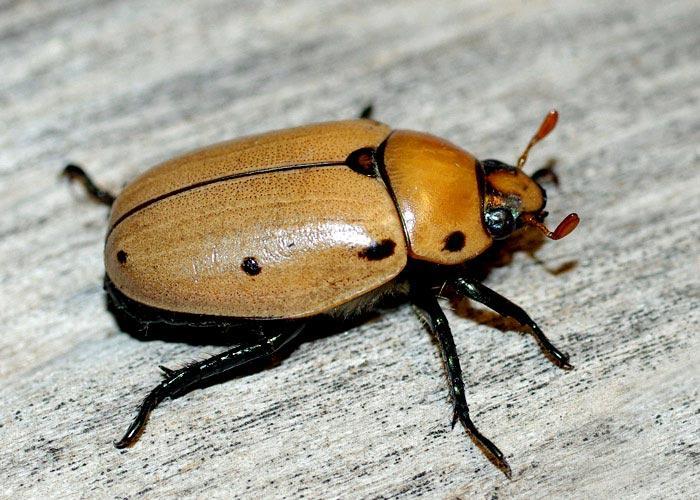Eastern Eyed Click Beetle (Alaus oculatus)
Updated on
17/11/2022The eastern eyed click beetle is a click beetle that also goes by the names eyed elater, big eyed click beetle, springbeetle, and skipjack. As with other click beetles, it makes a clicking sound as it jumps in the air on being disturbed, enabling it to right itself after being turned over. The nocturnal insect is attracted to lights at night.
Scientific Classification
- Class:Insecta
- Order:Coleoptera
- Family:Elateridae
- Genus:Alaus
- Species:A. oculatus
Conservation Status
Description
The click beetle has an elongated body that is entirely black and covered with tiny scales. It can reach a length of 1-1.8 in (25-45 mm). The pronotum (the dorsal plate of the prothorax) has, on each side, a large oval marking or eyespot made of darker scales with a white outline. That is how the click beetle gets its name. These ‘false eyes’ are a defensive adaptation against its predators by giving the impression of a bigger, formidable animal. Its real eyes are located on its head, behind the antennae. The striped elytra (wing case) are mottled with silvery, whitish scales.
Distribution: Central and North America.
Habitat: It lives around deciduous forests and in areas with ample hardwood trees like apple, cherry, or oak, especially those with a lot of decaying logs.
Do They Bite/Sting: Yes.
Lifespan: 2-5 days.
Predators: Moles, spiders, mantises, and insectivorous birds.
Behavior and Characteristics
Diet
The adult beetle derives its nutrition from plant juice and nectar but doesn’t feed much.
Life Cycle
1. Egg Stage
The eggs are laid on standing deadwood or in the soil.
2. Larva Stage
The larvae, known as wireworms, are agricultural pests eating plant matter. They also devour the larvae of wood-boring beetles, especially the longhorn beetles. They are up to 2 inches long, yellowish to dark brown, hard-shelled, and jointed.
3. Pupa Stage
The larvae pupate underground or in rotting logs.
4. Adult Stage
After emerging in spring, the adults are commonly seen till September.
FAQs
Eastern eyed click beetles usually don’t bite and are considered harmless to people and pets. But if they are not handled carefully, they can give a sharp, non-poisonous bite with their strong mandibles. But their first reaction is to try flying away from danger. Biting is their last resort.
Eastern eyed click beetles can be both good and bad. It is because, on the one hand, they consume agricultural plants in their larval stage leading to their labeling as pests. On the other hand, their larvae eat noxious wood-boring beetle larvae that are very harmful to trees. So they are both pests and beneficial insects.
No, the eyed elater is pretty common in its range. It is neither rare nor endangered.
Source
earthlingnature.files.wordpress.com, 4.bp.blogspot.com, inaturalist.ca, bugeric.blogspot.com,













